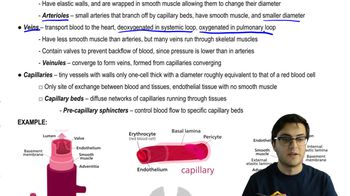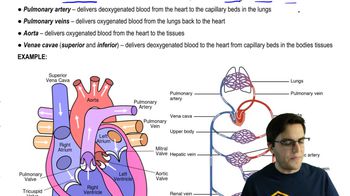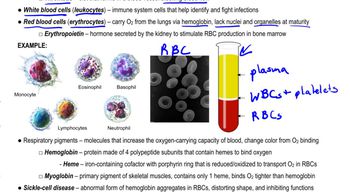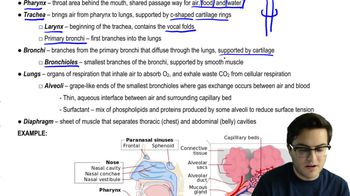Table of contents
- 1. Introduction to Biology2h 40m
- 2. Chemistry3h 40m
- 3. Water1h 26m
- 4. Biomolecules2h 23m
- 5. Cell Components2h 26m
- 6. The Membrane2h 31m
- 7. Energy and Metabolism2h 0m
- 8. Respiration2h 40m
- 9. Photosynthesis2h 49m
- 10. Cell Signaling59m
- 11. Cell Division2h 47m
- 12. Meiosis2h 0m
- 13. Mendelian Genetics4h 41m
- Introduction to Mendel's Experiments7m
- Genotype vs. Phenotype17m
- Punnett Squares13m
- Mendel's Experiments26m
- Mendel's Laws18m
- Monohybrid Crosses16m
- Test Crosses14m
- Dihybrid Crosses20m
- Punnett Square Probability26m
- Incomplete Dominance vs. Codominance20m
- Epistasis7m
- Non-Mendelian Genetics12m
- Pedigrees6m
- Autosomal Inheritance21m
- Sex-Linked Inheritance43m
- X-Inactivation9m
- 14. DNA Synthesis2h 27m
- 15. Gene Expression3h 20m
- 16. Regulation of Expression3h 31m
- Introduction to Regulation of Gene Expression13m
- Prokaryotic Gene Regulation via Operons27m
- The Lac Operon21m
- Glucose's Impact on Lac Operon25m
- The Trp Operon20m
- Review of the Lac Operon & Trp Operon11m
- Introduction to Eukaryotic Gene Regulation9m
- Eukaryotic Chromatin Modifications16m
- Eukaryotic Transcriptional Control22m
- Eukaryotic Post-Transcriptional Regulation28m
- Eukaryotic Post-Translational Regulation13m
- 17. Viruses37m
- 18. Biotechnology2h 58m
- 19. Genomics17m
- 20. Development1h 5m
- 21. Evolution3h 1m
- 22. Evolution of Populations3h 52m
- 23. Speciation1h 37m
- 24. History of Life on Earth2h 6m
- 25. Phylogeny2h 31m
- 26. Prokaryotes4h 59m
- 27. Protists1h 12m
- 28. Plants1h 22m
- 29. Fungi36m
- 30. Overview of Animals34m
- 31. Invertebrates1h 2m
- 32. Vertebrates50m
- 33. Plant Anatomy1h 3m
- 34. Vascular Plant Transport2m
- 35. Soil37m
- 36. Plant Reproduction47m
- 37. Plant Sensation and Response1h 9m
- 38. Animal Form and Function1h 19m
- 39. Digestive System10m
- 40. Circulatory System1h 57m
- 41. Immune System1h 12m
- 42. Osmoregulation and Excretion50m
- 43. Endocrine System4m
- 44. Animal Reproduction2m
- 45. Nervous System55m
- 46. Sensory Systems46m
- 47. Muscle Systems23m
- 48. Ecology3h 11m
- Introduction to Ecology20m
- Biogeography14m
- Earth's Climate Patterns50m
- Introduction to Terrestrial Biomes10m
- Terrestrial Biomes: Near Equator13m
- Terrestrial Biomes: Temperate Regions10m
- Terrestrial Biomes: Northern Regions15m
- Introduction to Aquatic Biomes27m
- Freshwater Aquatic Biomes14m
- Marine Aquatic Biomes13m
- 49. Animal Behavior28m
- 50. Population Ecology3h 41m
- Introduction to Population Ecology28m
- Population Sampling Methods23m
- Life History12m
- Population Demography17m
- Factors Limiting Population Growth14m
- Introduction to Population Growth Models22m
- Linear Population Growth6m
- Exponential Population Growth29m
- Logistic Population Growth32m
- r/K Selection10m
- The Human Population22m
- 51. Community Ecology2h 46m
- Introduction to Community Ecology2m
- Introduction to Community Interactions9m
- Community Interactions: Competition (-/-)38m
- Community Interactions: Exploitation (+/-)23m
- Community Interactions: Mutualism (+/+) & Commensalism (+/0)9m
- Community Structure35m
- Community Dynamics26m
- Geographic Impact on Communities21m
- 52. Ecosystems2h 36m
- 53. Conservation Biology24m
40. Circulatory System
Circulatory and Respiratory Anatomy
Problem 1a
Textbook Question
Textbook QuestionWhich of the following respiratory systems is not closely associated with a blood supply? a. the lungs of a vertebrate b. the gills of a fish c. the tracheal system of an insect d. the skin of an earthworm
 Verified step by step guidance
Verified step by step guidance1
Identify the respiratory systems listed and understand their association with blood supply.
Recognize that both the lungs of vertebrates and the gills of fish are highly vascularized, meaning they have a rich supply of blood vessels for gas exchange.
Understand that the skin of an earthworm also serves as a respiratory organ and is closely associated with the blood supply to facilitate gas exchange through the skin.
Learn that the tracheal system of an insect involves a network of tubes that directly deliver oxygen to tissues and cells, bypassing the circulatory system, hence it is not closely associated with a blood supply.
Conclude that the correct answer is c. the tracheal system of an insect.
Recommended similar problem, with video answer:
 Verified Solution
Verified SolutionThis video solution was recommended by our tutors as helpful for the problem above
Video duration:
1mPlay a video:
Was this helpful?
Key Concepts
Here are the essential concepts you must grasp in order to answer the question correctly.
Respiratory Systems
Respiratory systems are biological structures that facilitate the exchange of gases, primarily oxygen and carbon dioxide, between an organism and its environment. Different organisms have evolved various respiratory systems suited to their habitats, such as lungs in vertebrates, gills in fish, and tracheae in insects. Understanding these systems is crucial for analyzing how organisms adapt to their environments and meet their metabolic needs.
Recommended video:
Guided course
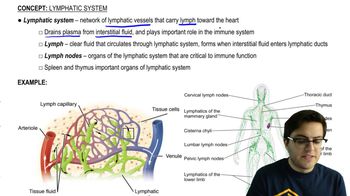
Lymphatic System
Blood Supply and Gas Exchange
In many respiratory systems, a close association with a blood supply is essential for efficient gas exchange. Blood vessels transport oxygen from the respiratory surface to tissues and carry carbon dioxide back for exhalation. However, some organisms, like insects, utilize a tracheal system that delivers oxygen directly to cells without the need for a circulatory system, highlighting the diversity of respiratory adaptations.
Recommended video:
Guided course

Gas Exchange and Breathing
Tracheal System in Insects
The tracheal system is a network of tubes that transport air directly to the tissues of insects, allowing for efficient gas exchange without relying on a blood supply. This system consists of spiracles that open to the outside and lead to a series of branching tubes called tracheae. The direct delivery of oxygen to cells enables insects to thrive in various environments, but it also means their respiratory system is less dependent on blood circulation compared to vertebrates and other organisms.
Recommended video:
Guided course

Immune System

 6:28m
6:28mWatch next
Master Gas Exchange and Circulation with a bite sized video explanation from Jason Amores Sumpter
Start learningRelated Videos
Related Practice



